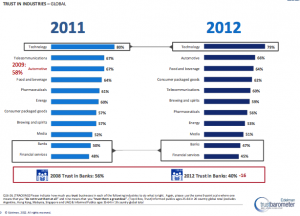A manual for building cities? A guest review by Philip Thornton
The role of cities in local, national and supranational areas is becoming a key focus for economists. More than half of the human population now lives in an urban rather than rural environment, as the UN has repeatedly warned although some (pdf) quibble with the definitions.
As a result there is a greater focus by economists on both what the impacts of this shift are and will be, and also on how one should think about ways of ensuring that this process of urbanisation bring greater human well-being rather than simply larger slums and greater potential for worse epidemics or civil conflicts. Perhaps the best –known example in this direction is Paul Romer’s proposal for “charter cities”.
Now a new book has drawn together essays by, or interviews with around 30 planners, architects, politicians, urban designers and city managers. Well not so much a book as a magazine, but at 140 A4 pages its word count would match the length of a similar book on the issue.
It is issue number 34 of a magazine/book called Volume, published by ARCHIS, a Netherlands based publisher and the C-Lab at Columbia University in New York, and is called City in a Box. ([amazon_link id=”9077966331″ target=”_blank” ]Back issues of Volume[/amazon_link] can be found on Amazon.)

City in a Box
In its editorial it makes clear that its focus is on the entities that are taking the initiative, making the decisions and establishing the governance of the new towns that are needed to meet the demand from a rising and increasing city-seeking population.
As editor-in-chief Arjen Ossterman says: “The general tendency is that companies instead of governments and their planning departments are starting to create and run cities – the full package or ‘city in a box’.” This will certainly ring bells in the UK which may not be building new towns but is looking at the private sector to design, fund and own the infrastructure needed to keep our existing, creaking cities going.
The book is thick with detail and plans and covers new cities across the world – and especially the emerging world. A fascinating map shows there are precisely four new towns built or proposed since 1990 in Europe – including Strand East in the former London Olympic Park. There are 600 in China and India alone.
Michelle Provoost, director of the New Towns Institute, points out that in establishing new towns, emerging economies are only coping what the UK in particular did after World War II to build “neighbourhood units as structural principle” such as Milton Keynes and Welwyn Garden City. But she points out than the driver this time is not post-war desolation but a desire by the enriched middle and upper class households for new high quality living. The new “new town” is very much a commercial product.
The interviews and articles are interspersed with “tips for building a new town”, which include advice such as replicating your product and designing the post card image. Confusing the tips also include the possibly contradictory messages to “find multiple ways to profit” and “find justification other than profit”.
But perhaps the most interesting section for economists is the one of governing the city as it raises issues of ownership, division of responsibilities and public goods. Scot Wighton, city manager of Lavasa Corporation that is building a private, planned city in Pune, India, points out that Lavasa is not yet a town under Indian law. This means that while he has responsibility for water, sewage, power, has transport, parks and many more things, he is accountable to the corporation president. As a result there is no power to tax or establish a public health authority. He acknowledges that it is not possible to have half a million people living under the rule of a company for ever and that transition to state ownership will come.
But in the meantime he highlights a real concern among investors over the security of their assets. The only way to make this assurance is through devolution of some authority, he says. “So how can we do that and still fit into the context of an Indian democracy? I think we have a way to do it but…until it happens we have this quasi-public-quasi-private city.”
A chart showing the structure of ownership and control of new towns such as Strand East shows that the London Borough of Newham is just an investor while the developer is a private company, LandProp Holdings BV. Welcome to a brave new world.
Overall it is primarily a publication for architects and urban designers and, at €19.50 an edition, carries a hefty price tag. But considering the growing importance of the study of economics geography and spatial economics in the UK many of the growing number of students, teachers and practitioners in this field may feel it worthwhile.
One small quibble is that the page numbers are right next the middle centrefold so makes it hard to flick through to the page you are seeking.
Phil Thornton is lead consultant at Clarity Economics. www.clarityeconomics.com

